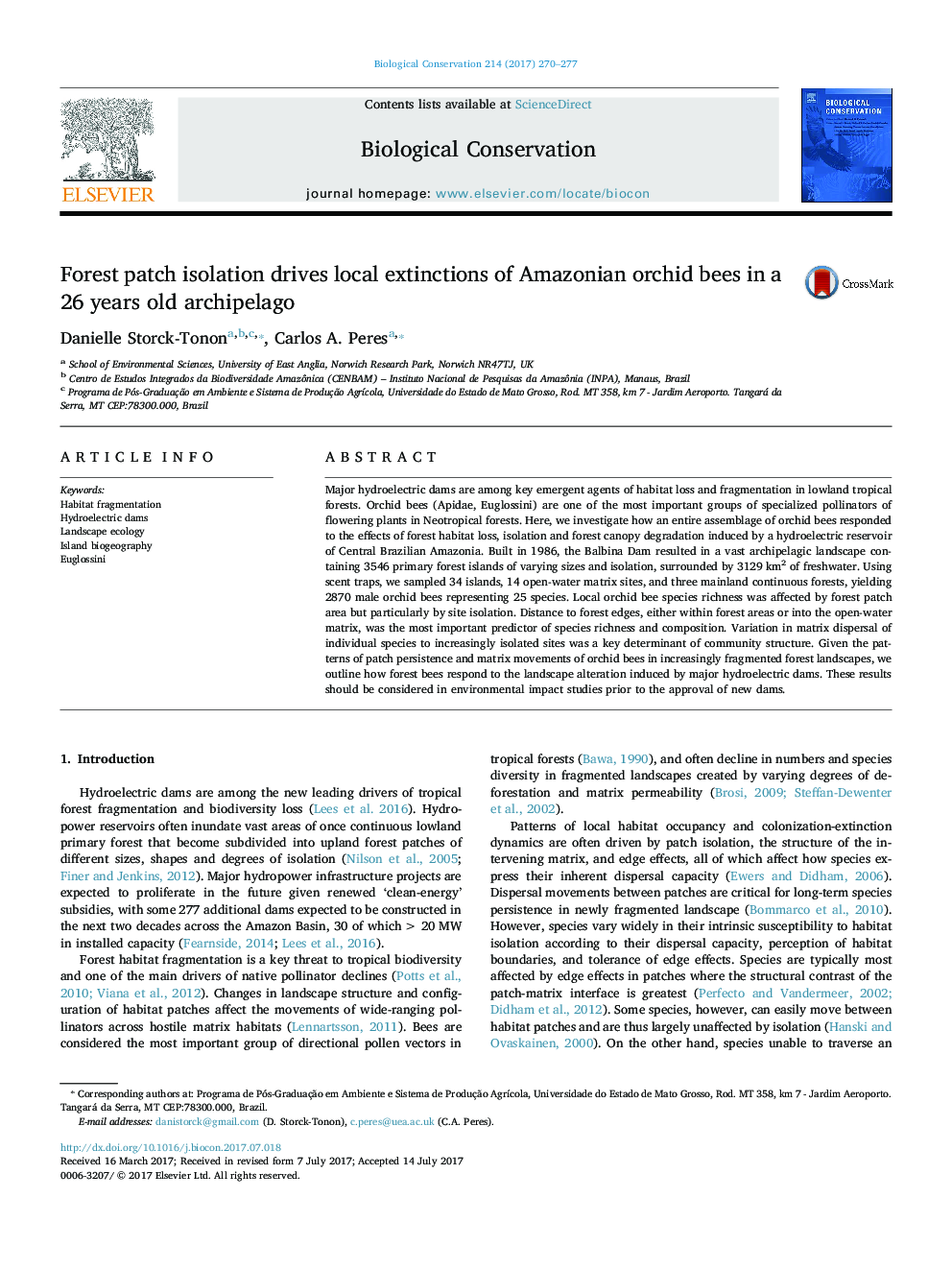| کد مقاله | کد نشریه | سال انتشار | مقاله انگلیسی | نسخه تمام متن |
|---|---|---|---|---|
| 5742953 | 1617891 | 2017 | 8 صفحه PDF | دانلود رایگان |
عنوان انگلیسی مقاله ISI
Forest patch isolation drives local extinctions of Amazonian orchid bees in a 26Â years old archipelago
ترجمه فارسی عنوان
انزوای پشه های جنگلی از بین رفتن موضعی زنبورهای ارغوانی آمازون در یک مجمع الجزایر 26 ساله
دانلود مقاله + سفارش ترجمه
دانلود مقاله ISI انگلیسی
رایگان برای ایرانیان
کلمات کلیدی
تجزیه زیست محیطی، سدهای هیدرولیک محیط زیست چشم انداز، زیست شناسی جزیره، یوگلوسینی،
موضوعات مرتبط
علوم زیستی و بیوفناوری
علوم کشاورزی و بیولوژیک
بوم شناسی، تکامل، رفتار و سامانه شناسی
چکیده انگلیسی
Major hydroelectric dams are among key emergent agents of habitat loss and fragmentation in lowland tropical forests. Orchid bees (Apidae, Euglossini) are one of the most important groups of specialized pollinators of flowering plants in Neotropical forests. Here, we investigate how an entire assemblage of orchid bees responded to the effects of forest habitat loss, isolation and forest canopy degradation induced by a hydroelectric reservoir of Central Brazilian Amazonia. Built in 1986, the Balbina Dam resulted in a vast archipelagic landscape containing 3546 primary forest islands of varying sizes and isolation, surrounded by 3129Â km2 of freshwater. Using scent traps, we sampled 34 islands, 14 open-water matrix sites, and three mainland continuous forests, yielding 2870 male orchid bees representing 25 species. Local orchid bee species richness was affected by forest patch area but particularly by site isolation. Distance to forest edges, either within forest areas or into the open-water matrix, was the most important predictor of species richness and composition. Variation in matrix dispersal of individual species to increasingly isolated sites was a key determinant of community structure. Given the patterns of patch persistence and matrix movements of orchid bees in increasingly fragmented forest landscapes, we outline how forest bees respond to the landscape alteration induced by major hydroelectric dams. These results should be considered in environmental impact studies prior to the approval of new dams.
ناشر
Database: Elsevier - ScienceDirect (ساینس دایرکت)
Journal: Biological Conservation - Volume 214, October 2017, Pages 270-277
Journal: Biological Conservation - Volume 214, October 2017, Pages 270-277
نویسندگان
Danielle Storck-Tonon, Carlos A. Peres,
